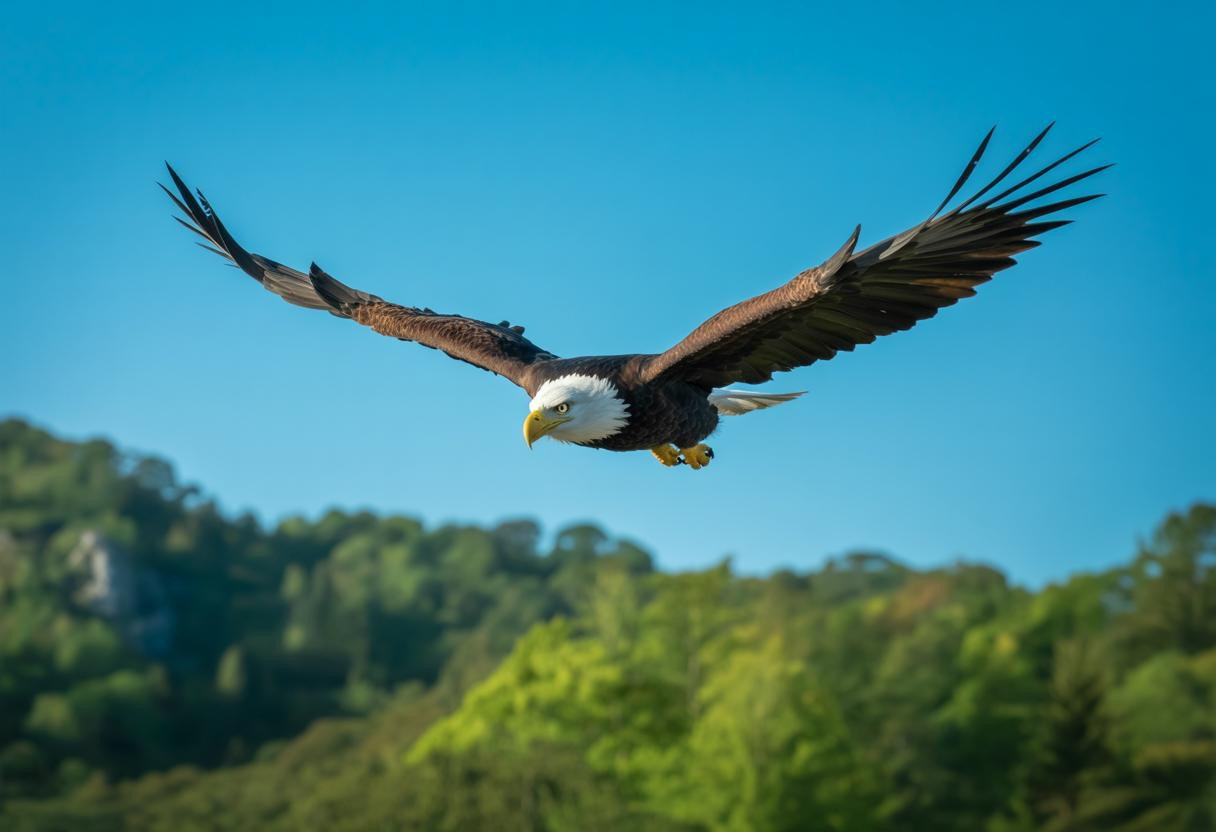Every June 20th, millions of Americans pause to honor a remarkable conservation success story that transformed one of our nation’s most beloved symbols from the brink of extinction into a thriving testament to environmental resilience. American Eagle Day celebrates not just the majestic Bald Eagle, but the extraordinary journey from 417 breeding pairs in the 1970s to over 300,000 eagles soaring across American skies today.
This dramatic recovery represents one of conservation’s greatest triumphs, yet few people understand the intricate web of scientific breakthroughs, legislative victories, and community dedication that made this miracle possible.
The remarkable transformation from national crisis to conservation triumph
The Bald Eagle’s selection as America’s national symbol on June 20, 1782, seemed prophetic when Charles Thomson designed it into the Great Seal. Yet by the mid-20th century, this powerful emblem faced a devastating reality: DDT pesticide poisoning was systematically destroying eagle populations through bioaccumulation, causing eggshell thinning and reproductive failure.
The crisis reached its peak in the 1970s when only 791 breeding pairs remained in the contiguous United States. This shocking decline prompted emergency action that would reshape American environmental policy forever. The 1972 DDT ban and the 1973 Endangered Species Act provided the legal framework for one of history’s most successful species recovery programs.
However, modern threats continue to challenge eagle populations. Lead poisoning from hunting ammunition now represents a critical ongoing concern, affecting up to 40% of eagle mortalities and requiring continued vigilance from conservation communities.
Scientific breakthroughs that revolutionized wildlife recovery strategies
The DDT connection discovery
Scientists discovered that DDT accumulated in eagle tissues, causing catastrophic reproductive failure. This breakthrough research directly linked industrial chemicals to wildlife population crashes, fundamentally changing how we understand ecosystem interconnectedness.
The revelation that apex predators like eagles served as environmental indicators transformed conservation science, establishing the principle that healthy predator populations reflect overall ecosystem health.
Captive breeding innovations
The American Eagle Foundation pioneered artificial incubation and hand-rearing techniques that dramatically improved chick survival rates. These methods increased breeding success from natural rates of 60% to artificial rates exceeding 85%, accelerating population recovery beyond natural limits.
Innovative fostering programs allowed captive-bred eagles to learn essential survival skills from wild parents, ensuring successful reintegration into natural populations.
Legislative milestones that changed conservation forever
The Endangered Species Act of 1973 provided unprecedented legal protections for critical habitats, creating the framework for systematic species recovery. This legislation required federal agencies to consult on projects affecting endangered species, fundamentally altering development patterns across America.
By 2007, eagle populations had rebounded to 9,789 breeding pairs, leading to official delisting from endangered status. This success demonstrated that targeted legislation, combined with scientific expertise and community support, could reverse even severe population declines.
Much like how policy changes can transform multiple aspects of society, environmental legislation created ripple effects that strengthened habitat protections for countless other species.
Community-driven conservation models that inspire global action
The American Eagle Foundation’s establishment of American Eagle Day in 1995 created a powerful platform for public education and advocacy. Gubernatorial proclamations across multiple states demonstrate how grassroots conservation can achieve policy recognition and sustained funding.
Educational programs connecting eagle conservation to broader environmental stewardship have engaged millions of Americans in wildlife protection. These initiatives prove that symbolic species can serve as powerful ambassadors for ecosystem conservation, similar to how traditional preservation techniques can evolve into global movements.
Future challenges requiring adaptive conservation strategies
Climate change presents emerging threats through altered prey distributions and shifting habitat conditions. Rising temperatures may force eagles to adapt feeding and nesting behaviors, requiring flexible management approaches that anticipate environmental changes.
Lead ammunition remains the primary preventable cause of eagle mortality, with non-toxic alternatives offering a practical solution that requires hunter education and policy support.
The enduring legacy of collaborative environmental stewardship
American Eagle Day represents far more than celebrating a national symbol—it demonstrates humanity’s capacity to reverse environmental damage through science-informed action and sustained commitment. The Bald Eagle’s recovery offers hope for countless other threatened species while proving that conservation success requires integrating scientific research, legislative protection, and community engagement into comprehensive strategies that address both immediate threats and long-term sustainability challenges.
